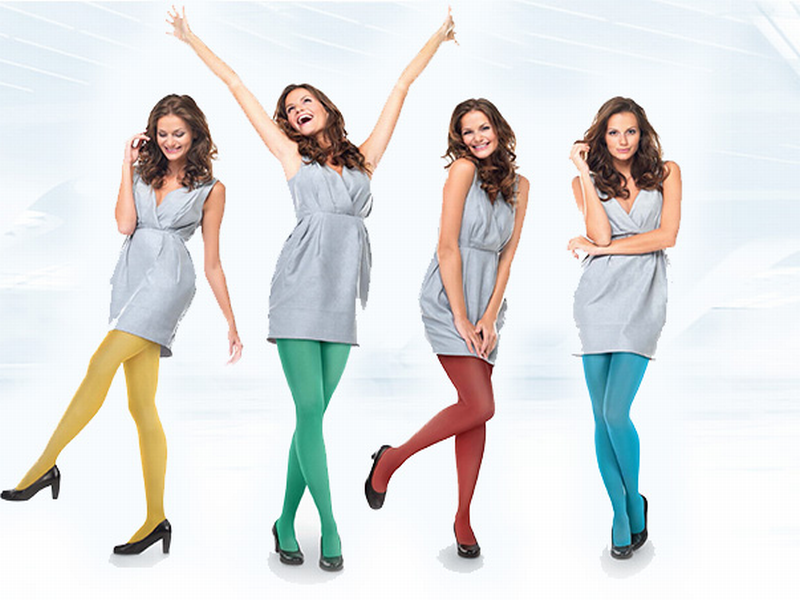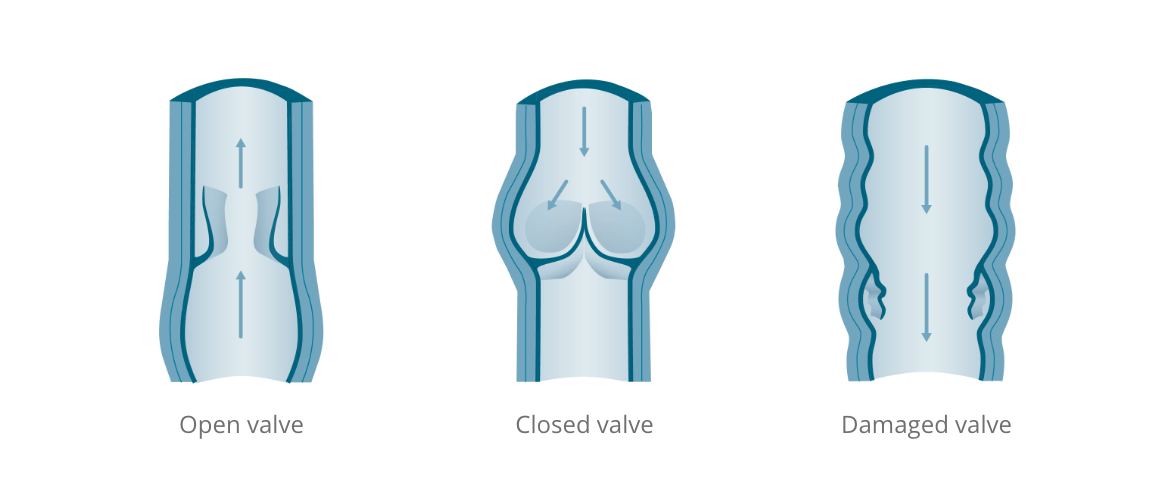
Compression
Chronic Venous Disease
Veins and Valves
Blood return from the legs occurs mainly through the deep veins. Within the veins, especially those of the legs, are valves. Venous valves are bicuspid
(two) flap like structures made of elastic tissue. The valves function to keep blood moving in one direction.
Venous Blood Flow
The flow of blood in the venous system is complex for several reasons:
Low pressure within the veins
Flow rates that vary from high (during muscle contraction) to almost no flow during quiet standing or sitting positions
Gravity
Collapsible nature of the venous wall
Presence of valves
Large volume of blood carried in the veins
Once the blood has passed from the arteries through the capillaries, it is flowing at a slower rate because little pressure remains to move the blood along. Blood flow in the veins below the heart is helped back up to the heart by the muscle pump. The walls of the veins are thin and somewhat floppy. To compensate for this, many veins are located in the muscles. Movement of the leg squeezes the veins, which pushes the blood toward the heart. When the muscles contract, the blood within the veins is squeezed up the vein and the valves open. When the muscle is at rest, the valves close helping to prevent the backward flow of blood.
Healthy vs. Damaged Valves
Healthy legs have veins with smooth, elastic walls that are perfectly designed to adapt to the changes in pressure within a vein. Veins have valves that keep blood moving in one direction: back toward the heart. As the leg muscles are activated, the venous valves open to allow one-way flow in the direction of the heart. When the muscles relax, the valves close to stop any back-flow.
But if the walls of a vein have been damaged by varicosis or thrombosis, the vein may dilate and the valves fail to close properly. When valves fail to work properly, blood flows backward into the veins. This results in blood pooling, putting pressure on lower leg veins, which may cause even more valves to fail over time.
So when the body is upright, the blood being transported back to the heart may stagnate in the legs. The pressure in the superficial veins directly under the skin rises and the veins become swollen. Tired, aching legs are the most common early symptoms – particularly after prolonged standing. Later, fluid may collect in the feet and ankles causing them to swell. The skin above the ankles may become thin and discolored or even break to form a venous stasis ulcer.

Chronic Venous Disease (CVD)
Venous disease is a chronic condition, meaning the symptoms can be life-long and can progress if not treated. There are several risk factors that can increase the possibility of someone developing a vein disorder.
CVD Risk Factors
One of the most common vein diseases is Chronic Venous Disease (CVD) causing valves in the veins to weaken over time. The disease is most common in women in their 40s and men in their 70s. CVD risk factors include:
Family history of Deep Vein Thrombosis (DVT)
Heart disease
History of leg trauma
Inactive lifestyle
Multiple pregnancies for women
Obesity
Old age
Prior cases of Deep Vein Thrombosis (DVT)
CVD Symptoms
Minor Symptoms
Itchy legs
Leg or ankle swelling
Changes in skin color, especially in lower leg
Moderate Symptoms
Aching or throbbing in legs
A heavy feeling in the legs
Leg cramps
Development of further skin changes in legs
Varicose veins
Swelling / tightness in the leg or calf muscle
Severe Symptoms
Pain
Skin pigment changes (red or bronze discoloration)
Dry scaly, itchy skin (eczema changes)
Edema
Dilated veins
Fibrosis and hardening of the skin of the lower legs
Lower leg ulcerations
Other types of vein disease
Deep Vein Thrombosis
One of the biggest risk factors of CVD is prior Deep Venous Thrombosis (DVT). A DVT is a blood clot in the deep venous system. It most commonly occurs in the deep veins of the legs, but can occur in other deep veins such as in the arms or pelvis as well. Risk factors for DVT include:
Age
Major Surgery
Major Trauma
Hospital stays over 3 days
Immobility or paralysis / paresis
Estrogen containing medications
Pregnancy
Chronic Medical Conditions (inflammatory bowel disease, lupus, coagulopathies)
Active cancer
Obesity
Previous Venous Thromboembolism (VTE)
Family history of VTE
Institutionalized living (nursing home, etc.)
PRODUCTS
Devices
- Knee hi Socks
- Thigh High Socks and Stockings
- Pantyhose and Thigh attachements
- Sport socks
- Dabetic socks
- Accessories
